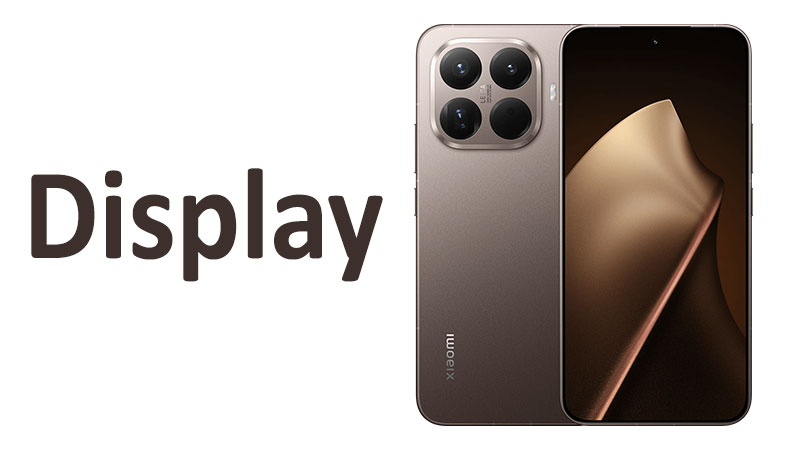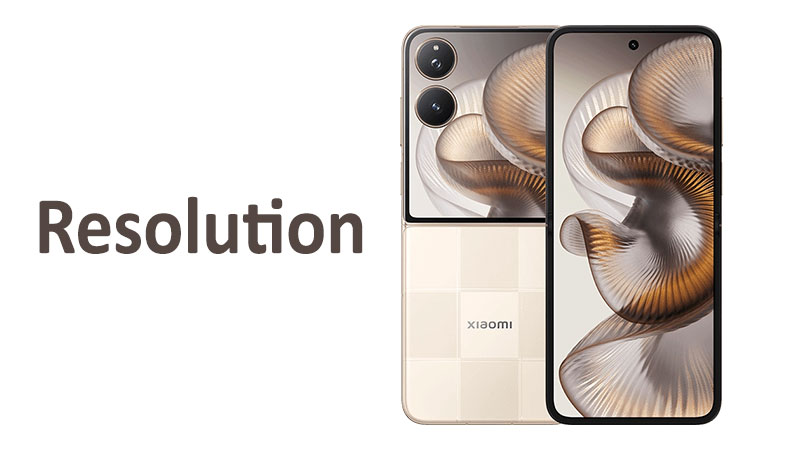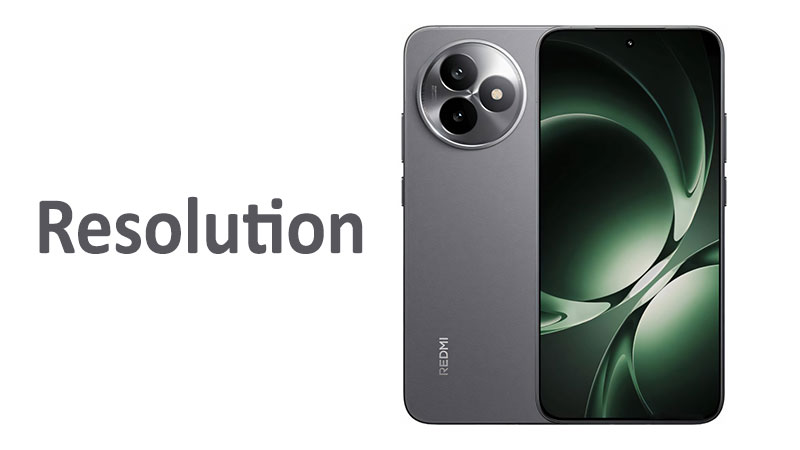The Xiaomi 15T Pro Display represents a significant advancement in mobile screen technology. This premium panel combines high-end specifications with crucial eye-care features. We will explore its key elements in this comprehensive review. Our analysis covers the panel type, resolution, refresh rate, and innovative dimming technology. Potential buyers can use this information to make an informed decision about the device.
The Foundation: AMOLED Technology and Color Depth
The Xiaomi 15T Pro features a sophisticated AMOLED screen. This technology is superior to traditional LCD panels in many ways. AMOLED, which stands for Active-Matrix Organic Light-Emitting Diode, provides perfect blacks. It achieves this by individually turning off pixels. This results in an infinite contrast ratio, making colors pop vividly on the screen.
Depth of Color and Display Size
The display supports an impressive 68 billion colors. This is often referred to as 12-bit color depth. This massive color palette ensures extremely smooth color gradients. You will see virtually no banding or unnatural jumps between shades. This capability is vital for professional photo editing and high-fidelity HDR video playback.
The display measures 6.83 inches diagonally. This size makes the phone a true flagship in terms of viewing space. The large canvas is perfect for media consumption and gaming. It features an excellent screen-to-body ratio of approximately 90.4%. Very thin bezels surround the panel. This design choice maximizes the usable display area for the user. It creates a highly immersive visual experience.
Pros and Cons of the AMOLED Panel
AMOLED technology offers many clear advantages. Users get deep, true blacks and vibrant, punchy colors. It also allows for efficient Always-On Display functionality. This feature saves battery life while showing essential information. However, AMOLED panels sometimes suffer from long-term image retention or burn-in. This issue is rare today due to software optimizations and hardware improvements. Some users may also perceive colors as oversaturated if they do not adjust the display settings. Xiaomi offers several color profiles to mitigate this effect.
Clarity and Sharpness: The Resolution Verdict
Xiaomi selected a crisp 1280×2772 pixel resolution for the 15T Pro. This resolution sits comfortably between standard FHD+ and higher-end WQHD+ screens. Many in the industry call this density 1.5K.
Pixel Density and Visual Detail
The 6.83-inch panel achieves a pixel density of about 447 pixels per inch (ppi). This figure is excellent for a phone of this size. At this density, individual pixels are virtually indistinguishable to the human eye. Images and text look extremely sharp and well-defined. Buyers can expect crisp details across all content.
This resolution choice strikes a perfect balance. It delivers near-flagship visual fidelity without excessively taxing the battery. A higher resolution, such as WQHD+, requires much more power. The 1.5K resolution provides sufficient clarity while maintaining good efficiency.
Specialized Comparison: 1.5K Versus WQHD+
Competitors and other flagship phones often feature WQHD+ resolution. For example, the Xiaomi 15 Ultra uses a WQHD+ panel. That superior resolution provides an even finer pixel density. However, the visual difference between 447 ppi and over 500 ppi is negligible for most users. Furthermore, WQHD+ consumes considerably more battery power. Xiaomi’s choice of 1.5K is a strategic decision. It optimizes performance and endurance without sacrificing noticeable sharpness in daily use.
Motion Mastery: The 144Hz Refresh Rate
The Xiaomi 15T Pro boasts a stunning 144Hz refresh rate. This feature significantly enhances the user experience. The refresh rate dictates how many times the screen updates per second. A higher rate means smoother motion.
Smoothness for Gaming and Scrolling
The 144Hz rate is 2.4 times faster than a standard 60Hz display. Scrolling through websites feels fluid and effortless. Animations appear instantaneous and highly responsive. This high refresh rate benefits mobile gamers tremendously. It provides a competitive edge in fast-paced games. Games supporting 144Hz refresh rate display smoother, clearer visuals during quick action. The motion clarity is simply outstanding.
The phone utilizes an adaptive refresh rate system. It adjusts the rate dynamically to match the content being displayed. The system uses 120Hz for the general user interface. It drops to 60Hz for static images or video playback to conserve battery. The Always-On Display (AOD) can drop as low as 30Hz. This smart optimization ensures maximum fluidity when needed and maximum efficiency otherwise.
Comparison to Previous Models and Competitors
The standard Xiaomi 15T model uses a 120Hz refresh rate. The Pro model offers this slight but meaningful upgrade to 144Hz. Most flagship phones currently cap at 120Hz. Therefore, the 144Hz on the 15T Pro gives it a unique selling point for performance users. This higher ceiling appeals directly to dedicated mobile gamers. They seek the absolute best response times and visual fluency.
Blinded by the Light: Peak Brightness Performance
One of the most impressive technical specifications is the advertised peak brightness. Xiaomi claims the 15T Pro can reach 3200 nits. This figure makes it one of the brightest smartphone displays available today.
Real-World Brightness and HDR Performance
Peak brightness figures are generally achieved in specific scenarios. This usually happens when displaying a small white portion of the screen. This is known as a low Average Picture Level or APL. In real-world automatic mode, the screen gets incredibly bright. This ensures perfect readability even under harsh direct sunlight. Initial tests indicate the phone manages over 1500 nits in Auto Brightness mode. This makes the 15T Pro highly functional outdoors.
The high brightness is essential for High Dynamic Range (HDR) content. The display supports both Dolby Vision and HDR10+. These are critical standards for premium video streaming. High brightness allows the display to render dazzling highlights and deep shadows simultaneously. This delivers a cinema-like viewing experience for compatible content.
Specialized Comparison: Brightness Evolution
The Xiaomi 14T Pro advertised an even higher peak brightness of 4000 nits. The 15T Pro’s 3200-nit peak is slightly lower than its predecessor. Nevertheless, 3200 nits is still exceptionally high. The reduction may be a trade-off for improved thermal management or color consistency. Users will not notice any practical difference in outdoor visibility. The 15T Pro display remains easily visible even on the sunniest days. This is a crucial feature for any flagship phone.
The Eye-Care Revolution: 3840Hz PWM Dimming
Pulse Width Modulation (PWM) dimming is a standard practice in OLED screens. It controls brightness by rapidly turning the pixels on and off. This flickering can cause eye strain or headaches for people who are sensitive to it.
Understanding High-Frequency PWM
The Xiaomi 15T Pro tackles this issue with an ultra-high frequency of 3840Hz PWM dimming. This is a game-changing feature for eye comfort. At such high speeds, the flickering is virtually imperceptible to the human eye. This significantly reduces visual fatigue during extended use. It especially helps when using the phone in low-light environments.
Many devices utilize much lower PWM frequencies. For example, many older or competing flagships operate below 500Hz. This low frequency is a known cause of eye discomfort for sensitive individuals. The Xiaomi 15T Pro’s commitment to 3840Hz PWM dimming puts it among the best in the industry for eye care.
Pros and Cons of Ultra-High PWM
The primary benefit is superior eye comfort and reduced flicker. This makes the phone much more accessible for flicker-sensitive users. This feature is a major selling point. The technology does not compromise color accuracy or contrast. Some competing phones use DC dimming to avoid flicker. However, DC dimming can sometimes hurt color and grayscale performance at low brightness. The 3840Hz PWM solution avoids these drawbacks effectively.
Competitor Comparison: Setting the Eye-Care Standard
The 3840Hz PWM dimming rate places the 15T Pro far ahead of many major competitors. Recent Apple iPhone and Samsung Galaxy series devices often use frequencies around 480Hz. Honor has also championed ultra-high PWM rates in its flagship phones. Xiaomi is now joining this elite group. The 15T Pro sets a new benchmark for eye comfort in the premium smartphone category. Buyers prioritizing eye health should certainly consider this technology.
Durability and Protection: Corning Gorilla Glass 7i
A superb display requires robust protection. Xiaomi uses Corning Gorilla Glass 7i to shield the 15T Pro’s screen. This glass is specifically engineered for enhanced durability in mid-to-high-tier devices.
The Mohs Hardness and Scratch Resistance
Glass hardness is commonly measured using the Mohs scale. The Gorilla Glass 7i on the 15T Pro registers a Mohs level 6 rating. This scratch resistance is standard for premium protective glass. It means materials like keys and coins generally cannot scratch the screen. Everyday micro-scratches still occur from harder particles. Sand and quartz often rate higher on the Mohs scale, typically level 7 to 8. Therefore, users should still exercise caution and consider a screen protector.
Gorilla Glass 7i offers improved scratch performance. It is up to two times more scratch resistant than many competitive lithium aluminosilicate glasses. This provides consumers with peace of mind.
Drop Performance and Structural Integrity
Corning developed the 7i variant with a focus on drop resistance. Laboratory tests show that Gorilla Glass 7i can survive drops from up to one meter. These tests use surfaces that simulate rough asphalt. This drop protection is excellent for everyday accidents. Many competitive glasses fail when dropped from half a meter or less.
Buyers should note the position of 7i in Corning’s lineup. While it offers superior performance compared to non-Gorilla Glass alternatives, it is not the very best. Corning’s Victus and Armor series provide even greater scratch and drop resistance. The 7i represents a powerful, cost-effective balance between protection and price point. It ensures the phone remains structurally sound during common mishaps.
Important Points a Buyer Should Know
A buyer evaluates a smartphone display on several key metrics. The Xiaomi 15T Pro excels in many of these areas. First, its 144Hz refresh rate provides an unmatched level of smoothness. This is crucial for gaming enthusiasts. Second, the 3840Hz PWM dimming is a huge health benefit. This feature is essential for people who suffer from screen-induced eye fatigue.
The resolution choice is another important factor. The 1.5K resolution provides excellent sharpness. It also helps preserve battery life compared to power-hungry WQHD+ displays. Users should understand that the 3200-nit peak brightness is for HDR content only. The typical manual brightness is lower, but still bright enough for all outdoor conditions. The protection provided by Gorilla Glass 7i is solid. However, users who are prone to dropping their phones frequently may want additional protective cases and screen layers.
The large 6.83-inch size offers great immersion. This size may be uncomfortable for users with smaller hands. Conversely, it provides a fantastic platform for watching movies and reading long documents. The AMOLED technology ensures perfect color reproduction and contrast. Ultimately, this display is a high-performance panel that prioritizes fluid motion and eye health.
Comprehensive Feature Breakdown
This panel is designed for the high-end user. The combination of features caters to gaming, multimedia, and daily comfort. The AMOLED base guarantees deep blacks and high contrast. This makes it ideal for movie watching and reading e-books. The 68 billion colors support a 10-bit workflow. This is important for photographers and video editors who need color accuracy.
The large screen size enhances the experience significantly. An immersive view is crucial for modern applications. The 90.4% screen-to-body ratio proves the engineers maximized the available real estate. It creates a nearly bezel-less look that rivals the best in the market. This sleek design makes the phone visually appealing.
Multimedia Excellence
The display’s support for Dolby Vision and HDR10+ makes it an elite media player. Dolby Vision is the premium standard for cinematic content. It ensures accurate scene-by-scene color and brightness optimization. Streaming services like Netflix and Disney+ benefit greatly from this certification. The 3200-nit peak brightness capability delivers the necessary dynamic range. It prevents the image from looking flat or washed out during highlights. This feature is critical for viewing HDR videos as the creators intended.
Gaming and Responsiveness
The 144Hz refresh rate translates directly into superior gaming performance. Smoother visuals allow for quicker reaction times in competitive games. Furthermore, high-end panels often feature a fast touch sampling rate. This minimizes the lag between a touch input and the screen’s reaction. This low latency is essential for a high-performance gaming experience. The display keeps pace with the powerful processor inside the phone.
The adaptive refresh rate mechanism intelligently switches to lower rates when idle. This prevents unnecessary battery drain. For example, scrolling through Twitter might use 120Hz, but reading a static article drops it to 60Hz. This behavior saves precious battery life throughout the day. The user gets a smooth experience only when necessary.
The 1.5K Resolution Discussion Revisited
Choosing 1.5K resolution over WQHD+ is a calculated performance decision. The human eye cannot easily distinguish pixels above 400 ppi. The 447 ppi of the 15T Pro is well above this threshold. Moving to WQHD+ mostly increases the computational load on the processor. It forces the GPU to render 40% more pixels for marginal gain. Xiaomi engineers prioritized sustained performance and battery longevity. This choice benefits the user with a phone that stays fast and cool under load.
Critical Considerations for Purchase
Prospective buyers must weigh the display’s advantages against its few drawbacks. The screen is undoubtedly a major strength of the 15T Pro. Its eye comfort features are best-in-class and highly beneficial. The 144Hz refresh rate provides an excellent daily user experience.
One point of caution involves the glass protection. Gorilla Glass 7i is good, but it is not the market leader in durability. Users coming from a phone with Gorilla Glass Victus or Armor may notice a difference. They should invest in a quality screen protector for maximum scratch defense. The Mohs level 6 scratch resistance is susceptible to fine particles like sand.
Another consideration is the sheer size of the 6.83-inch panel. This form factor is great for media but challenging for one-handed use. People seeking a compact, pocketable device might find the phone too large. Always assess the physical dimensions before committing to a purchase.
Overall, the display’s strengths vastly outweigh its minor weaknesses. It delivers a superior visual experience anchored by crucial health-focused technology. This makes the 15T Pro a compelling choice for a modern flagship device. It stands out in a crowded market thanks to its focus on flicker reduction and high refresh rate.
Final Buyer’s Summary
The display of the Xiaomi 15T Pro is a key component of the phone’s flagship appeal. It combines premium AMOLED color with blistering 144Hz speed. This speed ensures every interaction is fluid and responsive. The 3200-nit peak brightness handles demanding HDR formats beautifully. Most importantly, the 3840Hz PWM dimming provides superior eye protection. This feature alone justifies the purchase for sensitive users. The 1.5K resolution is a smart compromise that delivers high sharpness and good battery life. Protection is adequate with Gorilla Glass 7i. This display is a genuine highlight of the Xiaomi 15T Pro package. It offers a comprehensive, high-quality viewing experience for all users. The screen is designed to meet the demands of gamers and multimedia enthusiasts alike.
Frequently Asked Questions (FAQ)
1. Is the Xiaomi 15T Pro display always running at 144Hz?
No, the display uses an adaptive refresh rate system. It automatically switches between 144Hz, 120Hz, and lower frequencies. This smart adjustment matches the content and helps save battery life.
2. What is the benefit of 3840Hz PWM dimming?
The very high 3840Hz PWM dimming frequency significantly reduces screen flickering. This reduction is crucial for minimizing eye strain and headaches, especially in low light conditions.
3. Is the 1280 x 2772 resolution considered 4K?
No, the 1280×2772 resolution is often called 1.5K or CrystalRes. This is a high definition resolution, but it is not 4K or even the premium WQHD+ resolution found in some top-tier flagships.
4. How durable is the Corning Gorilla Glass 7i protection?
Gorilla Glass 7i offers good resistance against drops from up to one meter onto rough surfaces. It is also scratch-resistant to materials rated Mohs level 6. It protects well against everyday wear and tear.
5. Does the Xiaomi 15T Pro support high dynamic range video?
Yes, the display fully supports both HDR10+ and Dolby Vision streaming standards. The 3200-nit peak brightness ensures excellent performance when viewing compatible HDR content.



